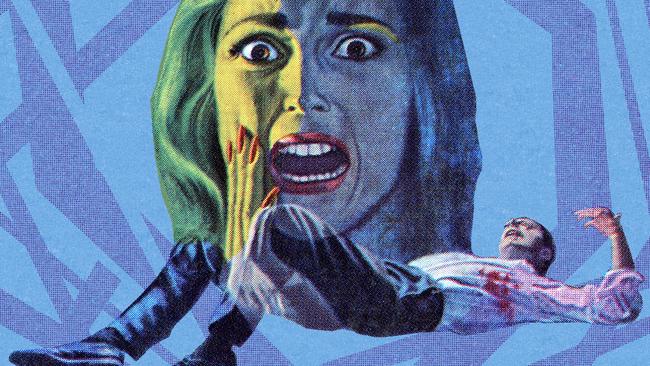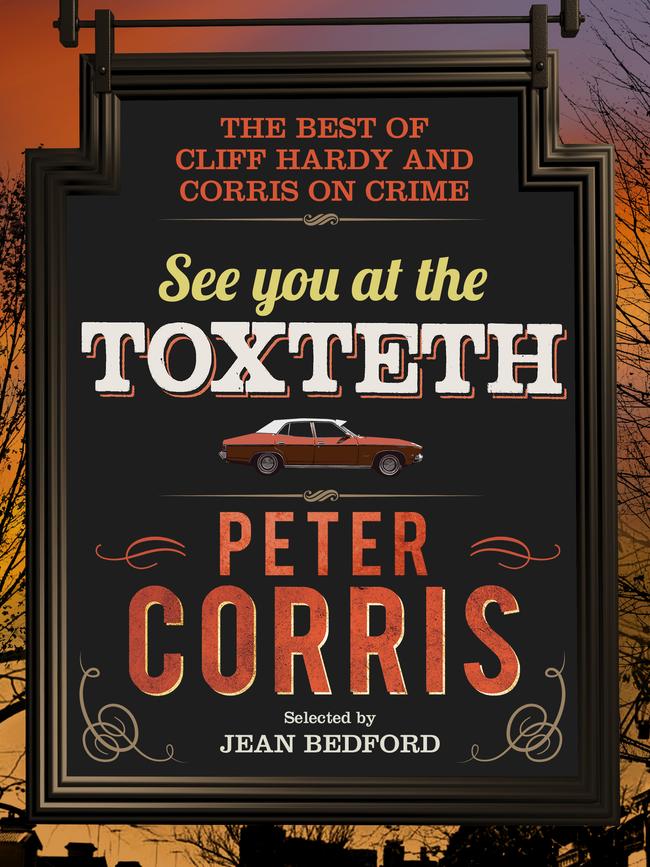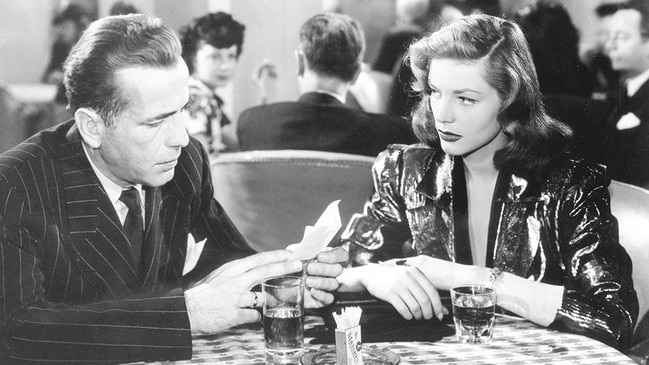Hard-boiled: Peter Corris on crime writing
In See You at the Toxteth, Peter Corris explains the ABC of writing crime fiction.

A is for action. This is a matter of balance. Some writers, such as PD James, have very little; some, like Mickey Spillane, have too much. If the low-action model is adopted, the characterisation, dialogue and descriptions had better be good. They were in James’s early novels but when she padded them out with descriptions of furniture and architecture (‘‘mullioned windows’’ adorn many country houses), things slowed to a halt. Spillane’s violence was overkill, literally.
A woman I was talking to at some book gathering asked me what kinds of books I wrote. I was writing crime, spy and historical stuff at the time and said I wrote action novels. ‘‘Oh, I hate action,’’ she said. Her favourite author? Jane Austen.
A is also for adultery. This has lost its potency as a force in crime fiction. In the past, concealment of it could be a prime motive for a murder. Once the chief ground for divorce, ‘‘irretrievable breakdown’’ has sidelined it. It may still play a part if a prenuptial agreement comes into the picture.
A is also for age. The age of the chief character in a long-running series of books can create a problem for the author. Agatha Christie virtually ignored the problem; Hercule Poirot, a middle-aged refugee from Belgium when introduced in The Mysterious Affair at Styles in 1917, would have topped 100 by the time of his final activities in the 1970s. Christie aged him slowly without comment, though admittedly he was pretty old and infirm by the end.
Robert B. Parker chose not to age his chief character, Spenser, a private eye, at all. Had he done so he would have been in trouble. Spenser fought Jersey Joe Walcott, former heavyweight champion, when he was, say, 20 and Walcott was in ‘‘the twilight of his career’’. Given that, he would have been in his 90s by the time of his last case in Sixkill (published posthumously in 2011).

This is a rare example of sports fan Parker getting things wrong. Strictly speaking, Walcott did not have a twilight. He retired after his second loss to Rocky Marciano in 1951. The television series based on Parker’s book took years and weight off Spenser by having him fight José Torres, a light-heavyweight world champion in the 1960s. Spenser is still appearing in a continuation of Parker’s books by Ace Atkins.
John D MacDonald, creator of Travis McGee, said an author could credibly age a series character at one-third the natural rate. This is a good working formula.
A is also for alcohol. This is an essential ingredient. I advise giving protagonists a drinking problem, which they struggle, more or less successfully, to control. This provides narrative texture. Reformed alcoholics are also a possibility, especially if they fall off the wagon from time to time, but AA meetings aren’t a lot of fun and the struggle to remain dry can become tedious.
The Matthew Scudder novels of Lawrence Block (The Sins of the Fathers, 1976, and following) and the Dave Robicheaux novels of James Lee Burke (The Neon Rain, 1987, and following) provide examples.
An incidental alcoholic character is very useful, especially in private-eye novels. The investigator can exploit this weakness, feel slightly guilty about it but still get the job done.
The classic ambivalent comment about drinking is at the end of Raymond Chandler’s The Big Sleep (1939): ‘‘On the way downtown I stopped at a bar and had a couple of double Scotches. They didn’t do me any good. All they did was make me think of Silver-Wig, and I never saw her again.’’ That’s getting a lot of resonance out of a couple of drinks.
-
B is for backstory. In most crime novels, especially private-eye books, something in the past, preferably murder, surfaces in the present and causes distress. Investigation therefore involves the past and the present, providing a rich texture and helping to fill up the pages to publishable length.

Sometimes the matter in the past is very distant and obscure.
The plot of Dashiell Hammett’s The Maltese Falcon (1930) is embellished by a myth about the gifting of a golden bird by the Spanish king to the Knights Hospitaller during the Crusades. The details don’t matter. This was a brilliant exotic touch, providing a backdrop to an intricate, sordid contemporary story.
A misplaced trust, rooted in family history and tradition, with details provided, is a good backstory setting. Then, in the here and now, A assures his lifelong friend B that he had nothing to do with the death of C in the past. B defends A to detective E who doesn’t believe him and comes to suspect B. Then A’s unreliability becomes clear, probably through the intervention of love interest F and things move towards a resolution. Examples abound.
B is also for blackmail. This is not as popular a theme as it once was. Decriminalisation of homosexuality removed one avenue for this form of extortion and our expectation of ethical behaviour from politicians and business leaders is now so low their transgressions don’t need to be hidden.
It was a very useful crime for writers, because, unlike others, it forced the perpetrator to maintain some form of connection, however temporary, with the victim. This provided opportunities for the blackmailer to make mistakes and gave the investigator a sporting chance.
When blackmail featured in crime novels it was usually as a precursor to murder, as in The Big Sleep.

B is also for Bradshaw’s. For more than 100 years, Bradshaw’s was the bible of railway travellers in Britain. It was consulted by investigators like Sherlock Holmes, Hercule Poirot, Sexton Blake, ‘‘Bulldog’’ Drummond, and others who needed to move around the country.
Bradshaw’s provided writers in the ‘‘Golden Age’’ with plot points (see Agatha Christie’s Death in the Clouds, 1935, using the continental Bradshaw’s). The publication issued frequent amendments and updates. Woe betide the suspect whose alibi relied on the arrival of the 8.15 from Kings Cross to Ely at 9.10 who’d failed to recognise Bradshaw’s notice of the cancellation of the 8.15 service on the day in question.
The chief exponent of the railway mystery, in which timetabling figured along with other aspects of the railway system, was the former railway engineer Freeman Wills Crofts.
A contemporary writer, Edward Marston, has attempted to revive the railway mystery (see H for historical).
B is also for butler. Did the butler ever do it? I can’t recall an example but I haven’t read Agatha Christie, Ngaio Marsh, Georgette Heyer or Dorothy L. Sayers exhaustively.
Given the convention that it’s where suspicion should fall in the country house story, if he had it in for the master or mistress of the house, other family members or a guest, it would be unwise for the butler to do it. Better to sublet the act to a footman or gardener.
In 1933 Georgette Heyer worked a twist in Why Shoot a Butler? The butler is the first victim.
-
C is for car. Given the tedious prevalence of car chases in crime stories on film and television, it is surprising to see that cars play a comparatively insignificant part in books. Police detectives just use the pool cars, except for Colin Dexter’s Inspector Morse, who drives a venerable Jaguar. Ian Rankin’s John Rebus drives a battered Saab when not using a pool car. Lee Child’s Jack Reacher has no car at all. How could it be otherwise? He doesn’t have a licence or a fixed abode. When he needs wheels, he borrows, usually from a woman.
C is also for CCTV. Closed circuit television now keeps watch on vast areas of modern cities. London, in particular, is said to be intensely covered but so are capital and provincial cities in many countries. CCTV footage figures prominently in many crime novels, especially the later ones of Barry Maitland (Silvermeadow, 2000, and others). The footage is notoriously grainy and flickering, which allows technicians to play walk-on parts.
In the early days of CCTV, video cassettes were often wiped and reused, to the frustration of investigators. Now, with high-capacity disks and hard drives, the images can be captured and held for all time. Contemporary criminals in fiction can use the footage to their own advantage, a good example being in Lee Child’s One Shot (2005).
C is also for clue puzzle. Coined by the pioneers of mystery fiction, Wilkie Collins, Edgar Allan Poe and Arthur Conan Doyle, this was the dominant mode until the advent of the hard-boiled style (see H for hard-boiled).
Agatha Christie was the queen of the clue puzzle but there were many contenders — Ngaio Marsh, Georgette Heyer, Margery Allingham, Dorothy L. Sayers (the latter two with upper-class protagonists) and others.
Most of the writers in this mode were women, but some men contributed — John Dickson Carr, Freeman Wills Crofts and the Poet Laureate Cecil Day-Lewis, who wrote under the pseudonym Nicholas Blake.
One of the many variants of the clue-puzzle style was practised by Erle Stanley Gardner in his Perry Mason stories (The Case of the Velvet Claws, 1933, and following), where witnesses could be tripped up by apparently minor discrepancies (see C for courtroom drama).
C is also for coincidence. To be avoided at all times.
C is also for complication. Raymond Chandler’s plots were complicated because he often cobbled together bits from short stories to form the narrative and because he didn’t care. ‘‘Scene is more important than plot,’’ he wrote, and I agree with him. Some critics suggest that a death in The Big Sleep is unattributable.
Others disagree. I don’t care.
In the golden age of crime writing, the time of Christie, Sayers, Marsh, et al, complications were often resolved in the last chapter when characters were called together, often, interestingly, in the library. Unreality was entrenched.
As a yardstick, no plot should be so complicated that an experienced crime reader cannot explain it within 24 hours of finishing the book. After that, with the reader almost certainly deep in another book, explanation cannot be expected.
C is also for courtroom drama. Setting aside the formulaic contrivances of Erle Stanley Gardner, the courtroom drama as an acknowledged contemporary subset of the crime genre was kicked off by Scott Turow’s Presumed Innocent (1987).
Understandably, the style has flourished most in the US, where the legal system, with its elected judges and district attorneys, plea bargains, bail bondsmen and capital punishment making for corruption and high stakes, has provided a rich field.
John Grisham became a leading practitioner with a series of novels (A Time to Kill, 1989, and following) that became hit films — little Tom Cruise in The Firm, big John Cusack in The Runaway Jury, for example.
Other contributors are Steve Martini, Michael Connelly and John Lescroart.
C is also for criminal protagonist. EW Hornung, brother-in-law of Arthur Conan Doyle, began publishing stories in the Cornhill Magazine about gentleman thief AJ Raffles in the 1890s. These were collected and published as The Amateur Cracksman in 1899.
This ‘‘soft’’ approach to having a hero working outside the law was continued by Leslie Charteris in his Simon Templar (‘‘the Saint’’) novels (Meet the Tiger, 1928, and following).
In The Killer Inside Me (1952), pulp writer Jim Thompson created one of the most psychotic of criminal protagonists. A sane and in that way tougher criminal protagonist was introduced by Donald E. Westlake, writing as Richard Stark, in his violent novels about Parker, who steals and kills. The first of these, The Hunter (1962), was filmed as Point Blank in 1967, with Lee Marvin perfectly cast as Parker (renamed Walker).
Australian Garry Disher’s character, Wyatt, who first appeared in Kickback (1991), is violent in a violent world but has a personal moral code in which his most violent actions are directed towards those who deserve it. This style, as practised by Stark and Disher, is perhaps the epitome of hard-boiled, in that the protagonists’ emotions, if any, are screwed down tight.
C is also for Crockford’s Clerical Directory. This listing of the Anglican clergy, which began publication in the mid-19th century, was an essential tool for investigators when the bona fides or the career of a clergyman character needed to be checked in the clue-puzzle mysteries of the early 20th century.
Many a vicar was exposed as an imposter, and some were found to have either shady pasts or dubious connections. Vicars figure less frequently in crime fiction now but otherwise nothing has changed.
This is an edited extract from See You at the Toxteth, by Peter Corris, with an introduction by Jean Bedford, published on Monday by Allen & Unwin (323pp, $29.99).


